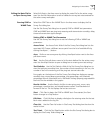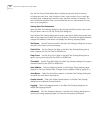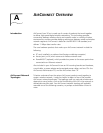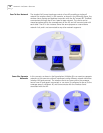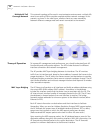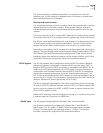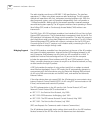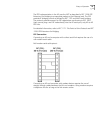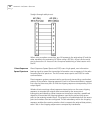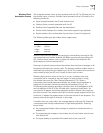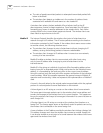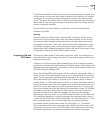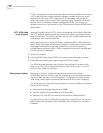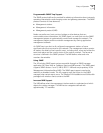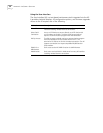
26 A
PPENDIX
A: A
IR
C
ONNECT
O
VERVIEW
■
The ratio of good-transmitted packets to attempted-transmitted packets falls
below a threshold.
■
The wireless client detects an imbalance in the number of wireless clients
associated with available APs and roams to a less loaded AP.
A wireless client selects the best available AP and adjusts itself to the AP
direct-sequence channel to begin association. Once associated, the AP begins
forwarding any frames it receives addressed to the wireless client. Each frame
contains fields for the current direct-sequence channel. The wireless client uses
these fields to resynchronize to the AP.
Mobile IP
The Internet Protocol identifies the wireless client point of attachment to a
network through its IP address. The AP routes packets according to the location
information contained in the IP header. If the wireless client roams across routers
to another subnet, the following situations occur:
■
The wireless client changes its point of attachment without changing its IP
address, causing forthcoming packets to become undeliverable.
■
The wireless client changes its IP address when it moves to a new network,
causing it to lose connection.
Mobile IP enables a wireless client to communicate with other hosts using
only its home IP address after changing its point-of-attachment to the
internet/intranet.
Mobile IP is like giving an individual a local post office forwarding address when
leaving home for an extended period. When mail arrives for the individual home
address, it is forwarded by the local post office to the current care-of-address.
Using this method, only the local post office requires notification of the individual
current address. While this example represents the general concept of Mobile IP
operation and functionality, it does not represent the implementation of Mobile IP
used.
A tunnel is the path taken by the original packet encapsulated within the payload
portion of a second packet to some destination on the network.
A
Home Agent
is an AP acting as a router on the wireless client home network.
The home agent intercepts packets sent to the wireless client home address and
tunnels the message to the wireless client at its current location. This happens as
long as the wireless client keeps its home agent informed of its current location on
some foreign link.
A
Foreign Agent
is an AP acting as a router at the wireless client location on a
foreign link. The foreign agent serves as the default router for packets sent out by
the wireless client connected on the same foreign link.
A care-of-address is the IP address used by the wireless client visiting a foreign link.
This address changes each time the wireless client moves to another foreign link.
It can also be viewed as an exit point of a tunnel between the wireless client home
agent and the wireless client itself.



